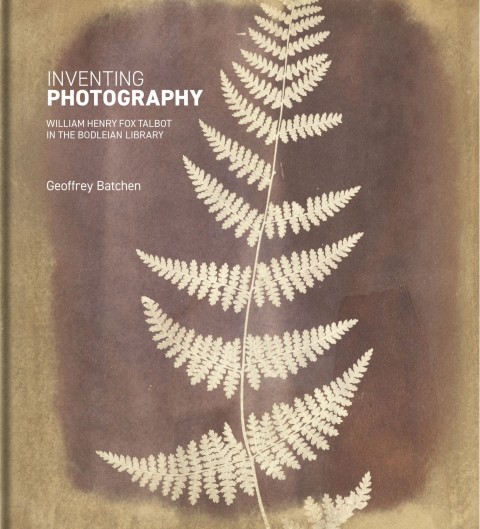Capturing the Moment - A Journey through Painting and Photography: At the Tate Modern until January 28, 2024
Gagosian Gallery Turns to Curator Joshua Chuang for Strategy on Photography
Summer Sale of 3,500 Photographs on I Photo Central at 30% Discount
Book Review: New Book on Talbot Trove at Bodleian Library

INVENTING PHOTOGRAPHY: WILLIAM HENRY FOX TALBOT IN THE BODLEIAN LIBRARY
By Geoffrey Batchen; foreward by Richard Oveden OBE, Bodleian Librarian
240 pages | 70 color plates | 9 ¼ x 10 ¼ inches
Oxford, UK: Bodleian Library Publishing, 2023
$65.00 hard bound.
Probably anyone with an even rudimental familiarity with the history of photography knows of William Henry Fox Talbot's role in the invention of photography, but it is never too much to be reminded what an extraordinary polymath he was, with interests in ancient languages, mathematics, chemistry, botany and art, among other subjects. His class position allowed him first the education and then the leisure time without the burden of having to work for a living to pursue his many interests.
Talbot first made early photographic experiments in the 1830s and released the details of his photogenic drawing process in January 1839. He continued to introduce important innovations to the medium in the 1840s and 1850s and stayed active in his pursuits until his death in 1877.
Just in the last decade, the Bodleian Library at Oxford University in England has acquired a valuable trove of Talbot's papers and images, including three albums given by Talbot to his sister, Horatia Feilding. Along with his illustrated books, "Sun Pictures in Scotland" and "The Pencil of Nature", this has prompted "Inventing Photography", which comprises 80 plates and an illustrated introductory essay that accompanied an exhibition curated by Batchen for the Weston Library in Oxford earlier this year.
With the invention of the daguerreotype and the opening of portrait studios in England, Talbot continued to work to improve his process, speeding exposure times through chemical adjustments and producing a latent image that would be brought out by further development, as well as using sodium thiosulphate as a fixer, as suggested by his friend John Herschel. And clearly the major advantage of Talbot's system was the ability to make numerous positive copies from his negative matrix, the system that defined photography for a century and a half until the development of digital technologies.
Batchen places Talbot in the context of his time and place, a rapidly industrializing, colonial country that embraced the commercial aspects of scientific advances. Of its inventors, Talbot was the most prescient in foreseeing the various uses to which photography could be employed, from the inexpensive reproduction of text and of artworks, to cataloguing and as evidence, to bringing images of distant places to a wider public, to art. His ultimately financially unsuccessful Reading Printing Establishment and his development of photomechanical engraving were practical attempts to exploit the advantages of his process.
The book includes numerous fine reproductions of images made by Talbot and others in all their faded—and sometimes occasionally surprisingly rich—glory, that document his travels, his home and his family.
My only slight criticism is that sometimes when Batchen describes an image in the text that image is reproduced in a page or two, but mostly the images referenced are in the section of Plates following the text and no plate number is given in the text for easy reference.
That slight quibble aside, this book is a fine addition to the literature on Talbot and the invention of photography.
Capturing the Moment - A Journey through Painting and Photography: At the Tate Modern until January 28, 2024
Gagosian Gallery Turns to Curator Joshua Chuang for Strategy on Photography
Summer Sale of 3,500 Photographs on I Photo Central at 30% Discount
Book Review: New Book on Talbot Trove at Bodleian Library


Share This